 |
|
USSF-12 (Atlas V) 1 July 2022 |
Space Launch Complex 41 Cape Canaveral Space Force Station |
| A United Launch Alliance Atlas V rocket launched the USSF-12 mission for the U.S. Space Force's Space Systems Command (SSC) at 7:15 p.m. on 1 July 2022 from Space Launch Complex-41 (SLC-41) at Cape Canaveral Space Force Station. USSF-12 features two satellite payloads: the Wide Field of View (WFOV) Testbed for SSC's Space Sensing Directorate and the USSF-12 Ring spacecraft for the Defense Department’s Space Test Program. Atlas V will deliver both spacecraft directly to geosynchronous orbit approximately 22,000 miles (35,500 km) above the equator approximately 6 hours after liftoff. | |
 |
|
| Facilities at SLC-41 include the Vertical Integration Facility at right where the rocket and payload are stacked and then moved on rails atop a mobile launcher to the launch pad at left. | |
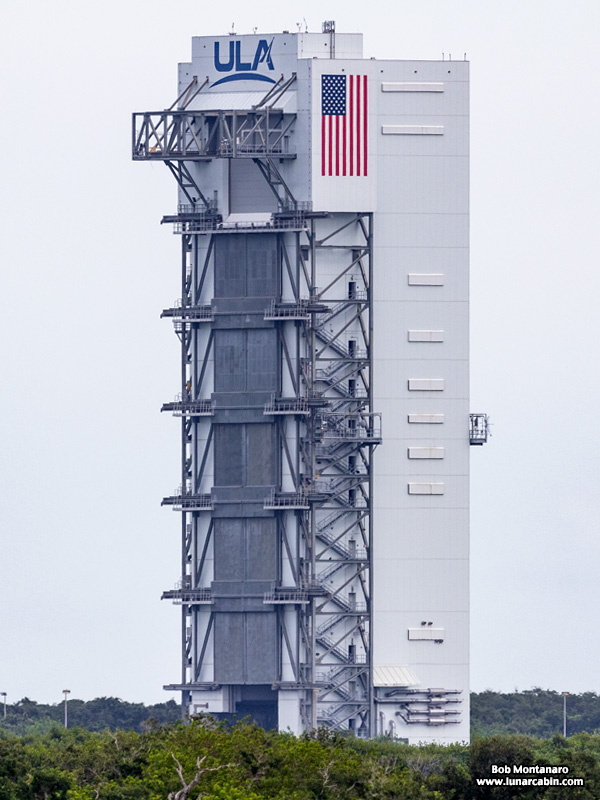 |
|
Detail of the Vertical Integration Facility. |
|
 |
|
The Atlas V vents gaseous oxygen that is continually topped off in the rocket prior to launch. |
|
 |
|
Ignition and lift off! |
|
 |
|
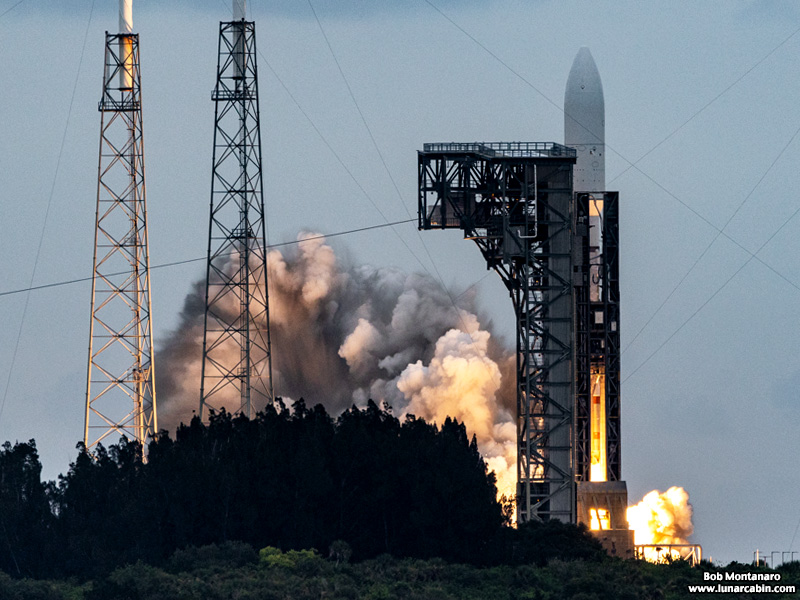 |
|
 |
|
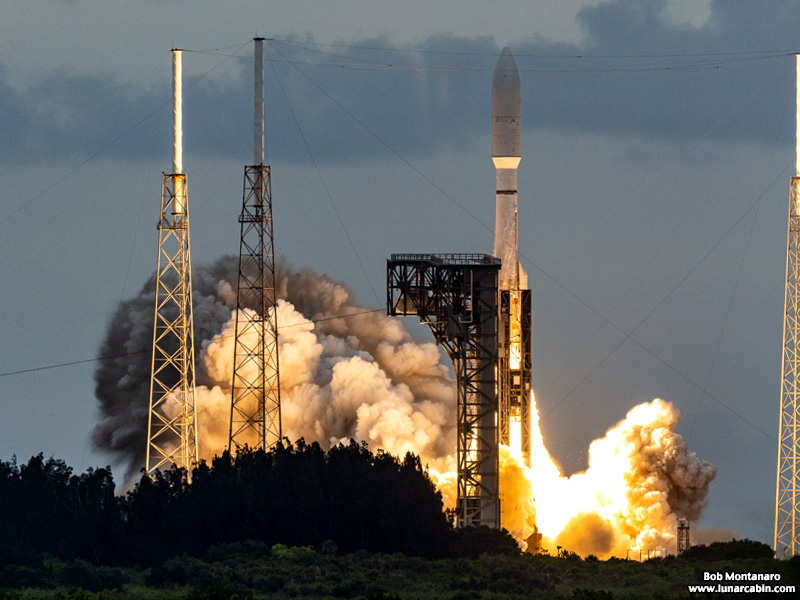 |
|
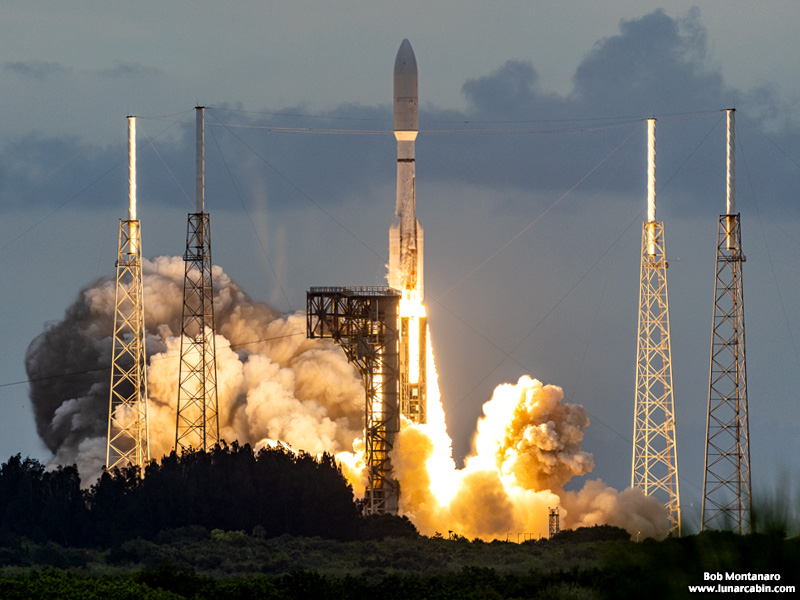 |
|
 |
|
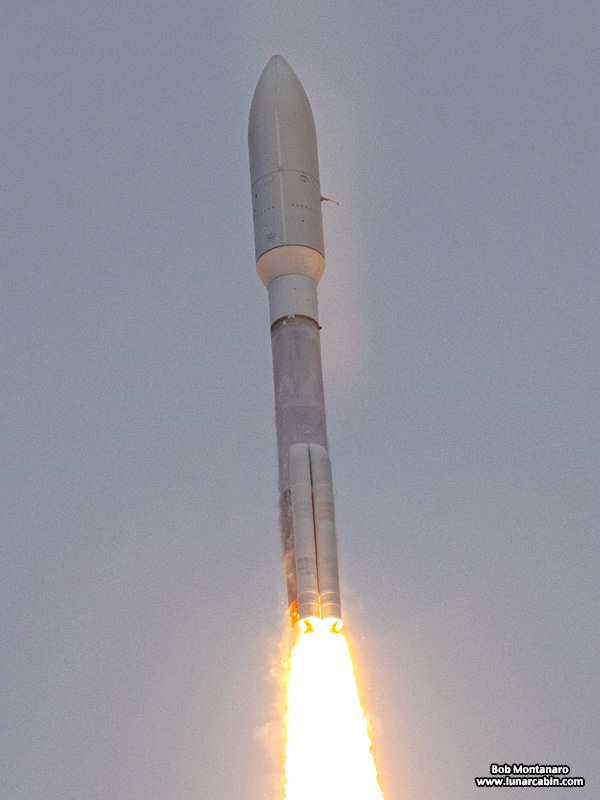 |
|
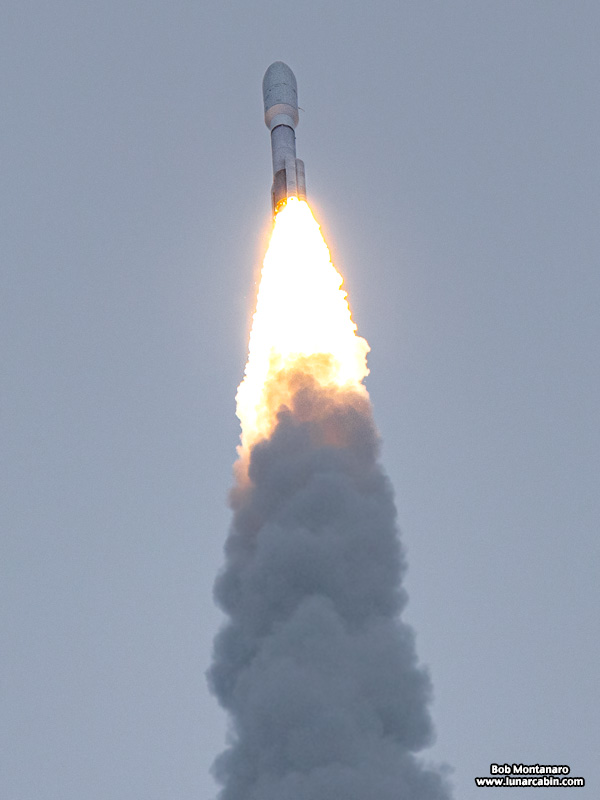 |
|
 |
|
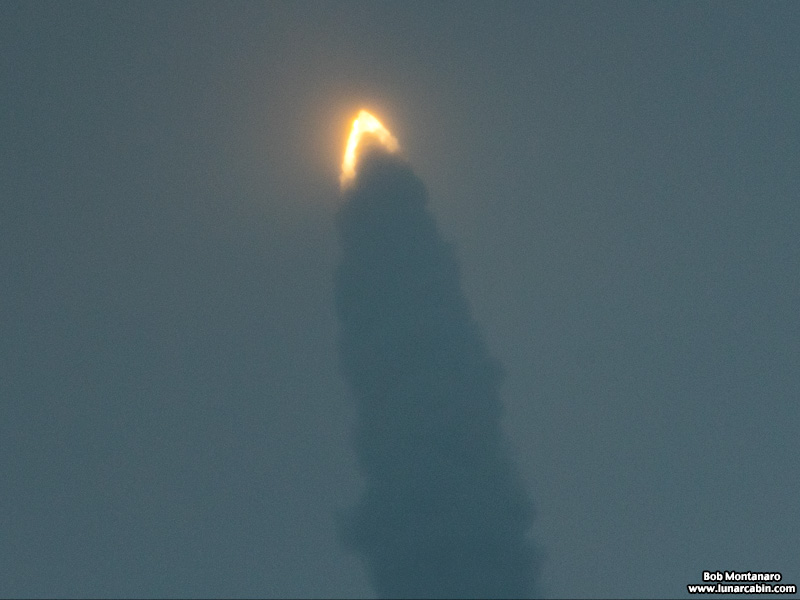 |
|
 |
|
 |
|
 |
|
PAYLOAD INFORMATION FROM A ULA PRESS RELEASE |
|
 |
|
Rendering of the WFOV testbed spacecraft in orbit. IMAGE: Millennium Space Systems, A Boeing Company |
|
The forward payload, WFOV (Wide Field of View), is a testbed spacecraft that informs the Next Gen Overhead Persistent Infrared program (OPIR). The Next Gen OPIR program will succeed the Space Based Infrared Systems program and is designed to provide a resilient space-based global missile warning capability against emerging missile and counter-space threats. Sponsored by Space Systems Command and managed by the NASA Ames Research Center, the mid-sized WFOV spacecraft is based on Millennium [Space Systems]’s AQUILA M8 affordable platform series and hosts a transformational OPIR six-degree staring sensor developed under a separate contract by L3Harris Technologies. The WFOV testbed is designed for a 3- to 5-year life with a total mass up to 6,613 lbs (3,000 kg) and a payload accommodation over 771 lbs (350 kg). WFOV’s primary mission in orbit is to explore future missile warning algorithms with data collected in space. The aft payload is a propulsive EELV Secondary Payload Adapter (ESPA) named the USSF-12 Ring. The Ring is a classified mission to demonstrate future technology for the Department of Defense. |
|
ULA PRESS MATERIAL |
|
United Launch Alliance Successfully Launches Critical National Security Mission for U.S. Space Force Cape Canaveral Space Force Station, Fla., (July 2, 2022)– A United Launch Alliance (ULA) Atlas V rocket carrying the USSF-12 mission for the U.S. Space Force’s Space Systems Command lifted off on July 1 at 7:15 p.m. EDT from Space Launch Complex-41 at Cape Canaveral Space Force Station. To date ULA has launched 151 times with 100 percent mission success. “This mission once again demonstrated ULA’s unmatched capability of precisely delivering the country’s most critical assets to a highly complex orbit,” said Gary Wentz, ULA vice president of Government and Commercial Programs. “Our strong partnership with the USSF team is essential to maintain our nation’s security advantages and achieve robust mission assurance. Thank you to the ULA team and our mission partners for the indelible commitment to mission success.” The mission launched on an Atlas V 541 configuration rocket that included a 5-meter short payload fairing. The Atlas booster for this mission was powered by the RD AMROSS RD-180 engine. Aerojet Rocketdyne provided the RL10C-1 engine for the Centaur upper stage and Northrop Grumman provided the Graphite Epoxy Motor (GEM) 63 solid rocket boosters. |
|
 |
|
Atlas V configuration for the USSF-12 launch. IMAGE: UNITED LAUNCH ALLIANCE |
|
 |
|
USSF-12 flight profile. IMAGE: UNITED LAUNCH ALLIANCE |
|
 |
|
IMAGE: UNITED LAUNCH ALLIANCE |
|
All contents copyright Lunar Cabin |
|